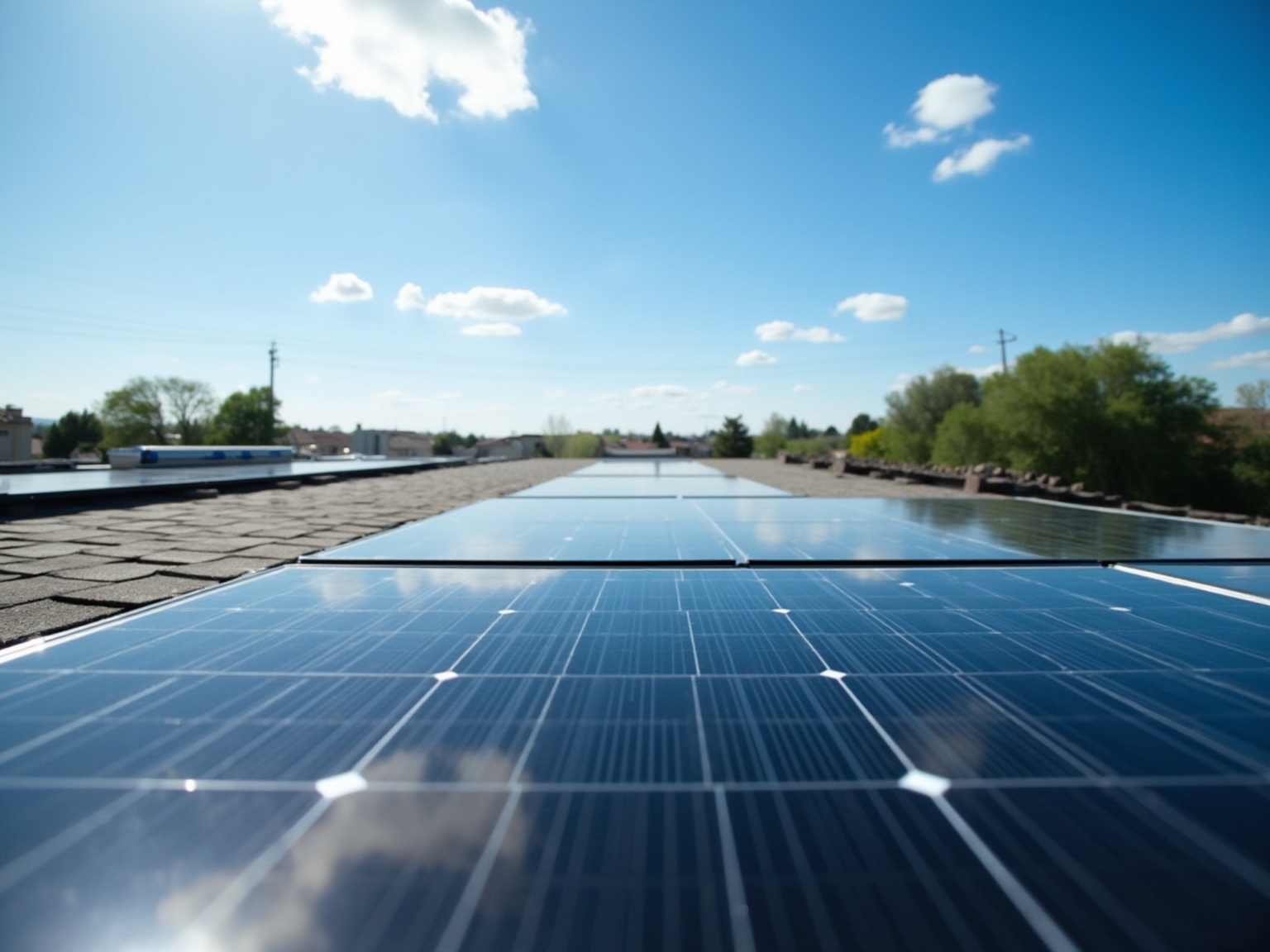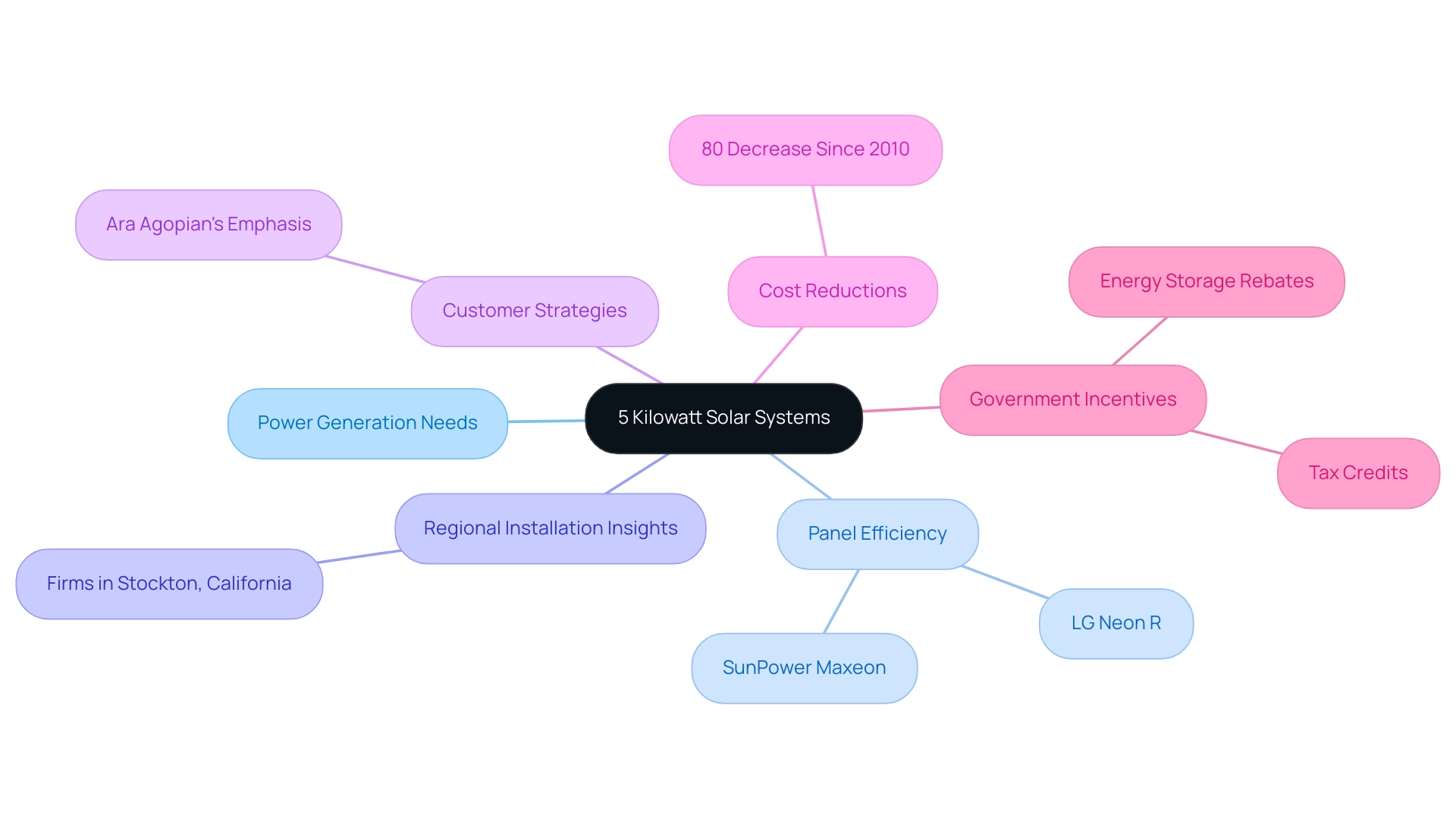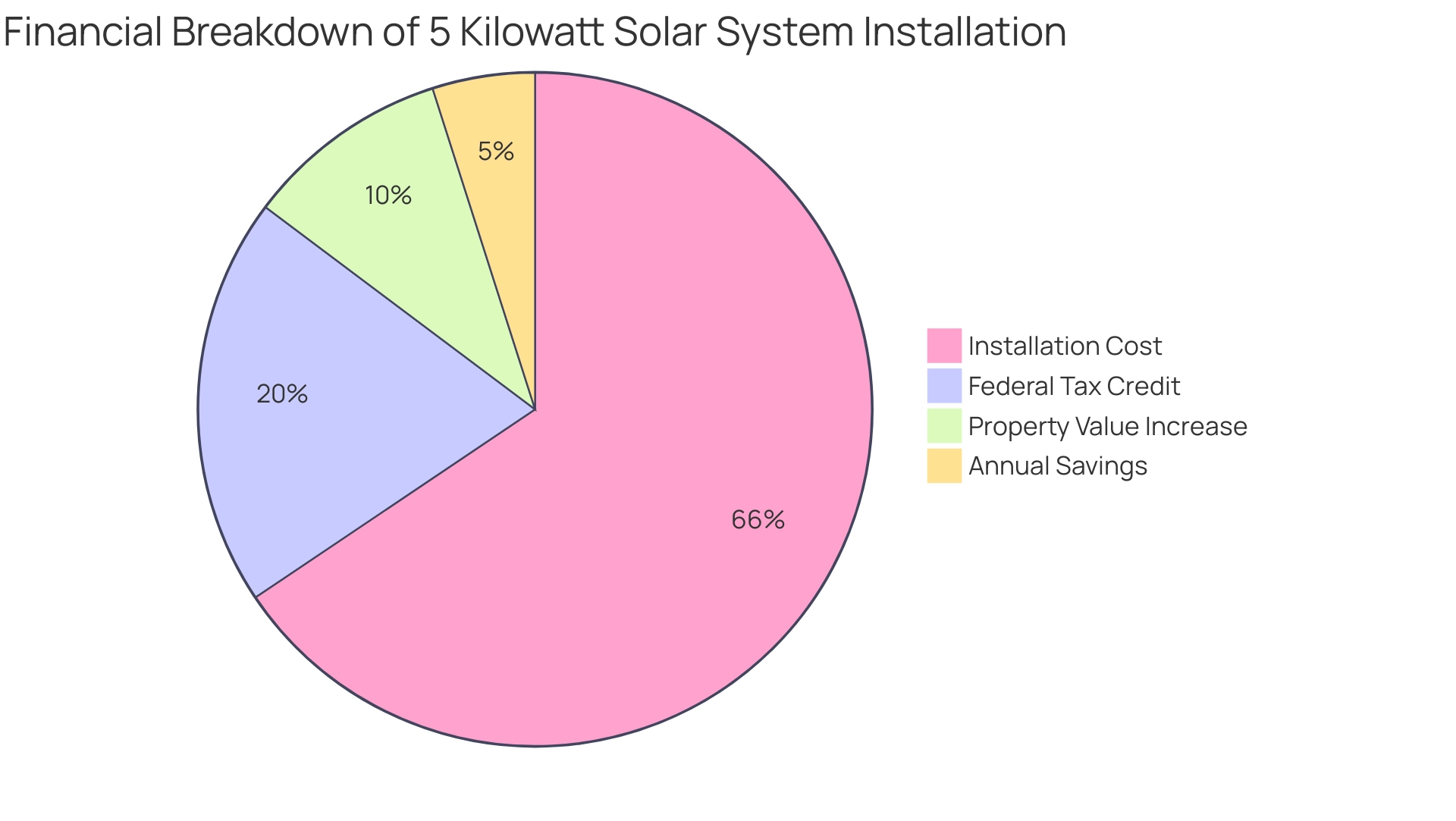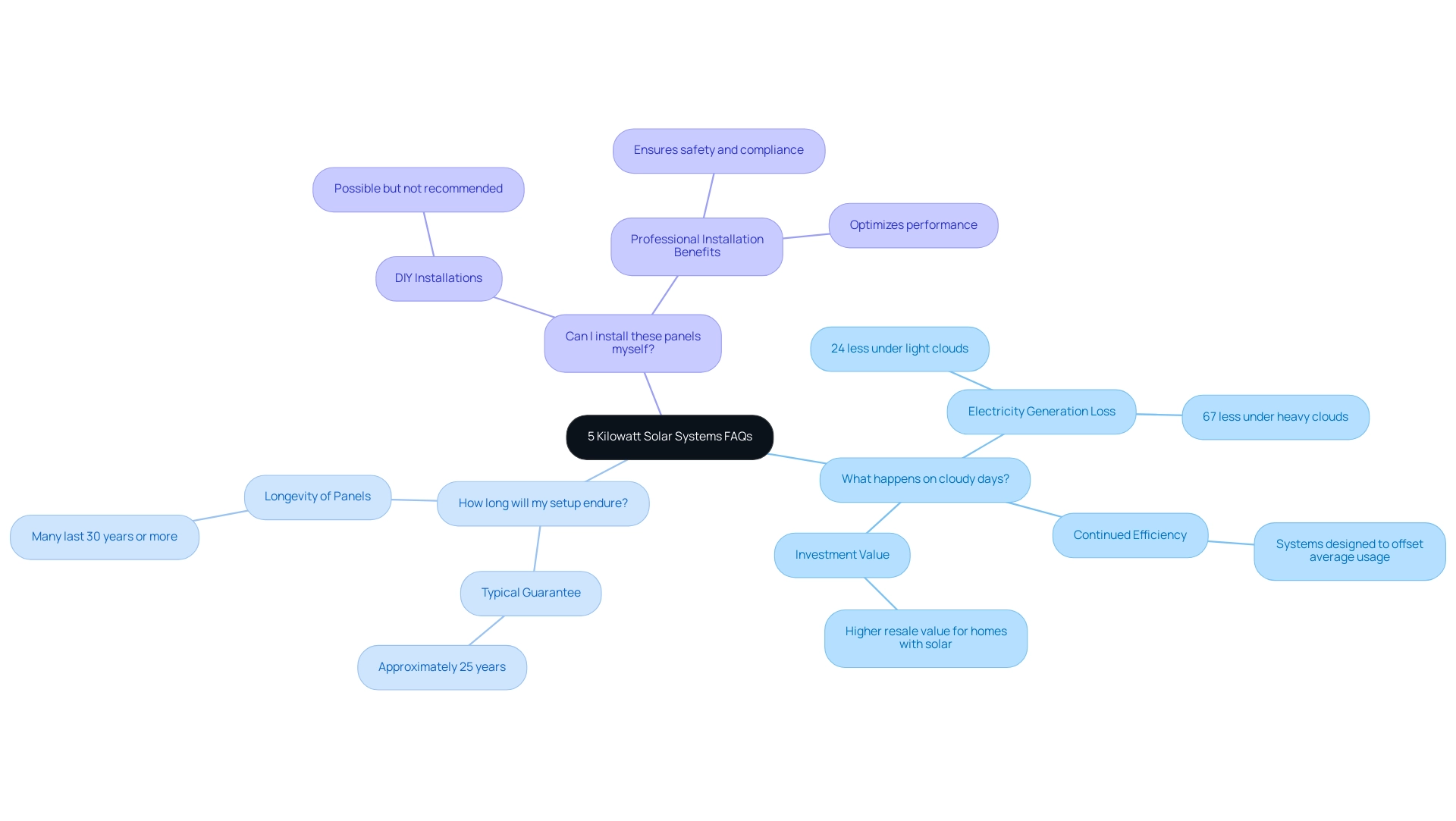Overview
A 5 kilowatt solar system is an effective energy solution for medium-sized homes, capable of generating sufficient power while providing financial and environmental benefits. The article supports this by detailing how such systems can significantly reduce electricity bills, increase property value, and decrease carbon emissions, making them an attractive investment for homeowners looking to embrace renewable energy.
Introduction
Choosing to invest in a 5 kilowatt solar system is a smart move for homeowners aiming to reduce their energy bills and embrace a more sustainable lifestyle. With the ability to generate enough energy to power a medium-sized home, these systems not only provide significant savings but also contribute to a healthier environment.
Understanding the details—like the number of panels needed, potential savings, and the impact of local sunlight conditions—can make all the difference in maximizing the benefits of solar energy.
As technology advances and costs decrease, now is the perfect time for homeowners to explore how a 5 kilowatt system can fit their unique energy needs, paving the way for a greener future.
Introduction to 5 Kilowatt Solar Systems
Choosing a photovoltaic setup of 5 kilowatt capacity is an excellent choice for many environmentally aware homeowners, as it typically generates enough power to meet the needs of a medium-sized residence. When we discuss the setup of a ‘5 kilowatt’ system, we’re referring to its maximum output under optimal conditions, which typically means you’ll need approximately 20 panels, depending on their wattage. However, it’s essential to align this system with your specific power requirements.
Elements such as your typical power usage and the quantity of sunlight your area, particularly in overcast regions, receives play an important role in assessing the efficiency of your renewable investment. For instance, energy panels such as the LG Neon R or the SunPower Maxeon series are known for their efficiency in low-light conditions, making them ideal choices for cloudy days. Regional photovoltaic firms in Stockton, California, can offer insights into these choices and help with customized installations that meet your power needs.
Ara Agopian, founder and CEO of Solar Insure, emphasizes the significance of customer-focused strategies and sustainable practices in the energy sector, highlighting the worth of investing in photovoltaic setups. With installation costs for sunlight-derived power dropping by 80% since 2010, this resource has become more attainable for a wider audience. Now is a great moment to examine how a 5 kilowatt energy setup can provide benefits, especially as backup power options like batteries are becoming increasingly significant for homeowners.
This shift towards resiliency highlights the evolving perspective on the value of energy systems in creating a more sustainable home. Additionally, government renewable energy initiatives provide advantages such as tax credits and rebates, making the shift to sustainable energy even more attractive. These initiatives can significantly reduce upfront costs and enhance the overall value of your energy investment.
Cost Analysis and Financial Benefits of 5 Kilowatt Solar Systems
When evaluating a photovoltaic energy setup, comprehending the financial commitment is essential. The average expense for a 5 kilowatt energy system usually ranges from $15,000 to $25,000 before taking into account any tax credits or incentives. It’s crucial for your electrical system to be at least 200 amps to accommodate a renewable energy installation.
Homeowners in California can greatly benefit from the federal tax incentive for renewable energy, which offers a 30% reduction on installation expenses, as Emily Walker aptly indicates:
With the ITC, you’ll receive a credit equivalent to 30% of your total installation cost applied to your federal tax bill.
Moreover, many utility companies offer additional rebates that further lower the initial outlay. Based on your power usage and location, a 5 kilowatt photovoltaic setup may require around 12 to 17 modules.
Over time, homeowners can anticipate saving up to $1,500 annually on their electricity bills, translating to a payback period of about 5 to 7 years. Moreover, setting up photovoltaic systems can increase your property’s worth, providing additional financial benefits over time. For example, a case study from a California homeowner demonstrated a substantial decrease in utility expenses after installing a photovoltaic system, which not only recouped its cost within six years but also raised the property value by 15%.
For those considering electric vehicle (EV) charging solutions, incorporating photovoltaic panels can further maximize savings and efficiency. By harnessing sunlight to power EV chargers, homeowners can decrease their reliance on grid electricity, resulting in further savings on charging expenses. As sunlight power is variable, homeowners should also consider storage options such as batteries to ensure backup power during outages.
As you investigate alternative options, these financial advantages, the possibility for increased home value, and real-life success stories present a persuasive argument for adopting renewable resources.
Technical Specifications and Performance of 5 Kilowatt Solar Systems
When considering a typical photovoltaic setup of 5 kilowatt, you can anticipate around 15 to 20 modules, with each module producing between 250 to 350 watts. These devices work hard to convert sunlight into electricity, and this energy is then sent to an inverter that changes the DC electricity into AC electricity, making it usable for your home. A key factor to consider is the efficiency of the panels—look for those boasting an efficiency rating above 18%, and don’t shy away from warranties that stretch to 25 years or more; they signal quality and reliability.
On average, a 5 kilowatt photovoltaic panel arrangement costs $13,750, making it a significant investment for homeowners.
Additionally, pay attention to the type of inverter you choose. While string inverters are a popular option, microinverters can really shine, especially in scenarios with shaded areas. This can greatly improve your setup’s overall performance.
It’s also important to consider the environmental benefits of solar power; systems powered by the sun can save you between $400 to $600 annually on utility expenses and prevent tons of carbon dioxide emissions, contributing to a healthier planet.
Furthermore, investing in solar battery backups is crucial for ensuring reliable power during outages and adverse weather conditions. As you evaluate whether your roof can support the installation, considering its orientation and angle will help maximize sunlight exposure for optimal power generation. Monitoring your power usage is also vital—recently, a sewage pump failure caused unexpected electricity usage, underscoring the importance of being aware of your consumption.
Moreover, emerging technologies like predictive analytics and artificial intelligence are increasingly optimizing heating performance, making it essential to stay informed about these advancements. By considering these elements, including the increasing use of heating solutions powered by the sun in North America, you’ll be well on your way to making a wise investment in renewable power for your home, enhancing your power independence while promoting sustainability.
Environmental Benefits of 5 Kilowatt Solar Systems
Installing a 5 kilowatt energy solution can lead to a remarkable reduction in your carbon footprint, potentially offsetting around 100 tons of carbon dioxide over its lifespan. To put that into perspective, this impact is akin to planting over 2,500 trees! By adopting renewable sources, you’re not just supplying your home with clean power; you’re also aiding in cleaner air and a healthier environment, playing a vital part in the fight against climate change.
As our client Andri experienced, he completely removed his electricity bills after installing a 12KW Roofit Solar system, showcasing the tangible advantages of renewable power. At Powercore Electric, we pride ourselves on our unmatched quality craftsmanship, ensuring that every installation is meticulously executed to meet the highest standards.
Our local expertise allows us to tailor each project to the distinct needs of California communities. As more of your neighbors choose renewable energy options, including renewable-powered EV charging stations and optimal roof designs, the collective effect reduces our dependence on fossil fuels, paving the way for a more sustainable community. Moreover, with U.S. photovoltaic capacity expected to increase from 74 gigawatts in 2022 to 1,600 gigawatts by 2050, this transition towards renewable sources not only aids our planet but also improves the quality of life for all individuals in the region.
Considering that coal-fired power plants emit 800-1250 grams of CO2 per kWh compared to sunlight power, which produces no emissions, it becomes clear that this form of power is one of the best solutions to tackle accelerated climate change. Join the movement towards sustainable energy, and together, we can make a difference!
Frequently Asked Questions About 5 Kilowatt Solar Systems
Q: What happens on cloudy days?
Absolutely, photovoltaic systems can still produce electricity, even when the skies are overcast! However, their efficiency declines—research indicates that under light cloud cover, photovoltaic systems can generate about 24% less electricity than on sunny days, and under heavy clouds, that figure rises to a considerable 67% decrease.
According to a study published in the International Journal of Engineering Science and Computing by Tatiana Lebreton, under heavy clouds, photovoltaic systems can generate 67% less electricity. But don’t worry! Most energy systems are cleverly designed to produce enough energy to offset average usage, even in less-than-ideal weather conditions.
In fact, photovoltaic systems function efficiently even in overcast weather, and potential investors should not be discouraged by such conditions, as they continue to be a worthwhile investment. Homes outfitted with renewable energy systems often sell for a higher price compared to similar homes without such systems, making it a smart investment for your property! Property owners can generally recoup their investment in their renewable energy installation in approximately 15.66 years.
Q: How long will my setup endure?
A: Great question! Most photovoltaic arrays include a strong guarantee of approximately 25 years.
However, many panels are constructed to endure even longer, effectively operating for 30 years or beyond!
Q: Can I install these panels myself?
A: While some adventurous homeowners take on DIY installations, it’s generally best to opt for professional installation. This guarantees that your setup is secure, adheres to local regulations, and is configured for optimal performance.
Don’t forget to explore additional resources such as government programs, which can offer financial incentives for installation, and leading cleaning services that help maintain your setup’s efficiency. Additionally, consider how Tesla home chargers can complement your solar energy system, allowing you to charge your electric vehicle sustainably and efficiently!
Conclusion
Investing in a 5 kilowatt solar system is an empowering choice for homeowners seeking to cut energy costs while contributing to a more sustainable future. By generating sufficient energy for a medium-sized home, these systems not only help reduce monthly bills but also play a significant role in decreasing carbon footprints. Understanding the specifics—such as panel efficiency, local sunlight conditions, and available financial incentives—can greatly enhance the overall benefits of solar energy.
The financial advantages of a 5 kilowatt solar system are compelling. With installation costs becoming more manageable, combined with tax credits and utility rebates, homeowners can expect a solid return on investment. The potential savings on electricity bills, along with the increase in property value, makes solar energy not just an environmentally friendly option but a smart financial decision as well.
Moreover, the environmental impact of switching to solar energy is profound. By significantly reducing carbon emissions, homeowners contribute to a cleaner atmosphere and help combat climate change. As more individuals join the movement towards renewable energy, the collective benefits will ripple through communities, fostering a healthier planet for future generations.
Ultimately, embracing a 5 kilowatt solar system is about more than just energy savings; it’s a step towards a more resilient and sustainable lifestyle. With the right knowledge and resources, homeowners can confidently embark on this journey, knowing they are making a positive difference for themselves and the environment. Now is the time to take action and harness the power of the sun for a brighter, greener tomorrow.







